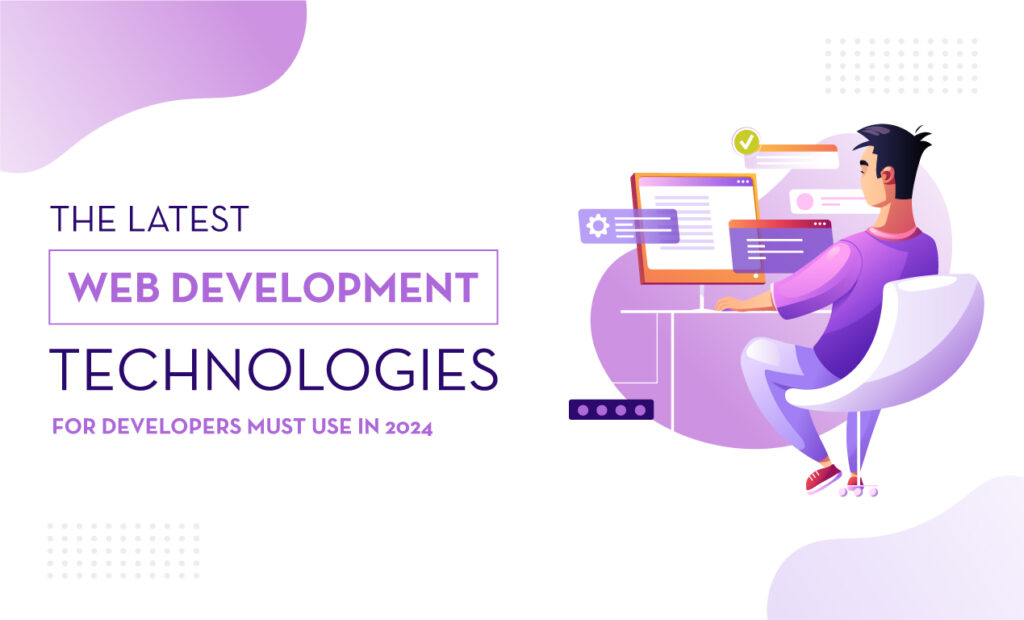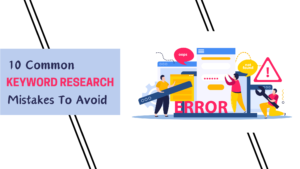In the ever-evolving landscape of web development, staying current with the latest technologies is paramount to creating cutting-edge and high-performing websites. As we step into the present year, several emerging technologies are shaping the way developers design, build, and optimize online experiences. In this comprehensive guide, we’ll delve into the latest web development technologies that are redefining the digital landscape.
In this blog, we have compiled a list of the latest Web Development Technologies that web developers must use in 2024.
✅ Points Include in the Web Development Technologies Blog
- What are Web Technologies?
- Introduction of Web Technologies
- Conclusion
Introduction:
A. The Need for Innovation
In an era where user expectations are higher than ever, web developers are continually seeking innovative solutions to deliver faster, more secure, and visually stunning websites. The latest technologies are at the forefront of this digital transformation.
B. Enhancing User Experiences
The focus on user-centric design and seamless interactions is driving the adoption of technologies that not only streamline development processes but also elevate the overall user experience.
7 Latest Web Development Technologies 2024:
1. Progressive Web Apps (PWAs)
A. Bridging the Gap Between Web and Mobile
The ability of Progressive Web Apps (PWAs) to blend the greatest features of mobile and web applications has led to their immense popularity. Offering offline functionality, push notifications, and rapid loading times, PWAs are becoming a staple for businesses aiming to provide a responsive and engaging user experience.
B. Offline-First Development
The offline-first approach, championed by PWAs, is revolutionizing how web applications handle connectivity issues. Users can now seamlessly interact with web apps even in the absence of a stable internet connection, ensuring uninterrupted access to content and services.
2. Server-less Architecture
A. Streamlining Development and Deployment
Server-less architecture is redefining how developers build and deploy applications. By abstracting server management, this approach allows developers to focus solely on writing code, thereby reducing development time and operational overhead.
B. Cost-Efficiency and Scalability
The pay-as-you-go model of server-less computing ensures cost efficiency, as organizations only pay for the actual resources consumed. Additionally, the automatic scalability of server-less applications enables seamless handling of varying workloads.
3. Single Page Applications (SPAs)
A. Seamless and Reactive User Interfaces
Single-page applications (SPAs) provide a fluid and responsive user experience by loading content dynamically without requiring full page reloads. This approach results in faster navigation and a more app-like feel, contributing to improved user engagement.
B. JavaScript Frameworks Dominance
Frameworks such as React, Angular, and Vue.js continue to dominate the SPA landscape, empowering developers to create dynamic and interactive interfaces with ease.
4. WebAssembly
A. Unlocking High-Performance Computing
WebAssembly (Wasm) is revolutionizing web development by enabling the execution of high-performance code in the browser. This technology opens the door to a wide range of applications, from complex computational tasks to immersive gaming experiences.
B. Language Agnosticism
One of the key advantages of WebAssembly is its language agnosticism, allowing developers to write code in languages like C, C++, and Rust and compile it to run efficiently in web browsers.
5. Jamstack Architecture
A. Decoupling Frontend and Backend
Jamstack architecture promotes the separation of the front end and back end, enabling greater flexibility and scalability. By leveraging APIs for dynamic functionalities, developers can create secure and performant web applications.
B. Improved Performance and Security
Jamstack not only enhances website performance by pre-rendering content but also improves security by reducing the attack surface and minimizing server-side vulnerabilities.
6. Artificial Intelligence and Machine Learning Integration [AI and ML]
A. Personalization and User Insights
The integration of AI and ML in web development is enhancing user experiences through personalized content recommendations, chatbots, and data-driven insights. This technology empowers businesses to understand user behavior and tailor their offerings accordingly.
B. Automation and Efficiency
AI-driven automation is streamlining various aspects of web development, from code generation to testing and deployment. This not only accelerates development cycles but also enhances the overall efficiency of web development teams.
7. Blockchain Beyond Cryptocurrency
Blockchain technology is extending its reach beyond cryptocurrencies. In 2023, we see its application in supply chain management, healthcare data security, and ensuring the integrity of digital transactions.
✅ Conclusion: Navigating the Future of Web Development
As we navigate the dynamic landscape of web development, these emerging Web Development Technologies are reshaping the possibilities of what can be achieved online. Whether it’s creating immersive user experiences with PWAs, adopting serverless architectures for streamlined development, or leveraging the power of AI and ML, developers have an array of tools at their disposal to push the boundaries of digital innovation.
At Shreeji Software, we are committed to staying at the forefront of these advancements to deliver unparalleled web development solutions. Contact us today to embark on a journey of digital transformation and bring your online presence to new heights.
Stay tuned for more updates on the latest trends and Web Development Technologies shaping the future of web development!











